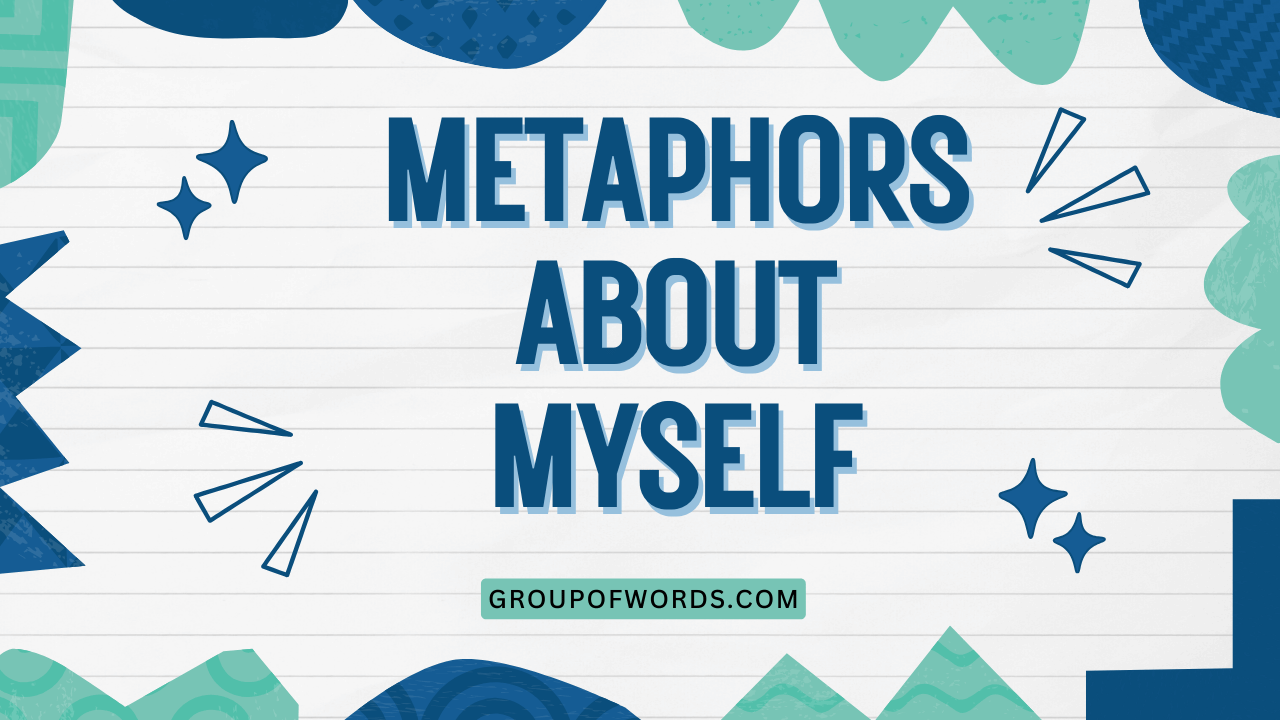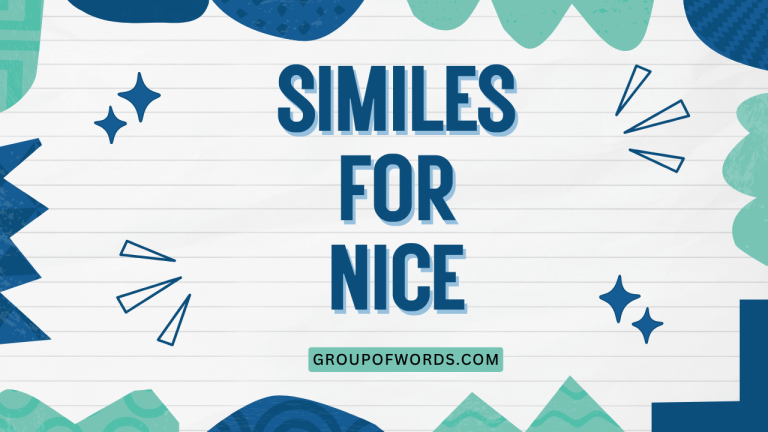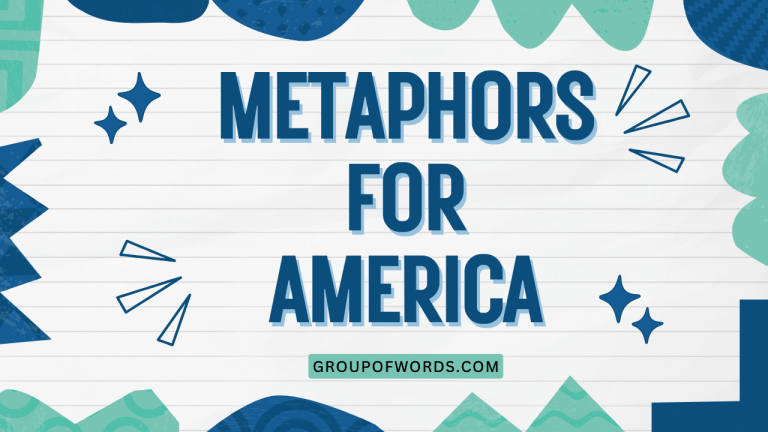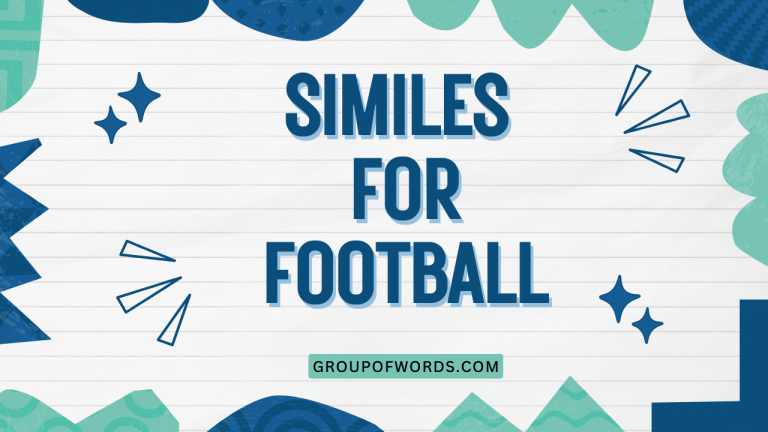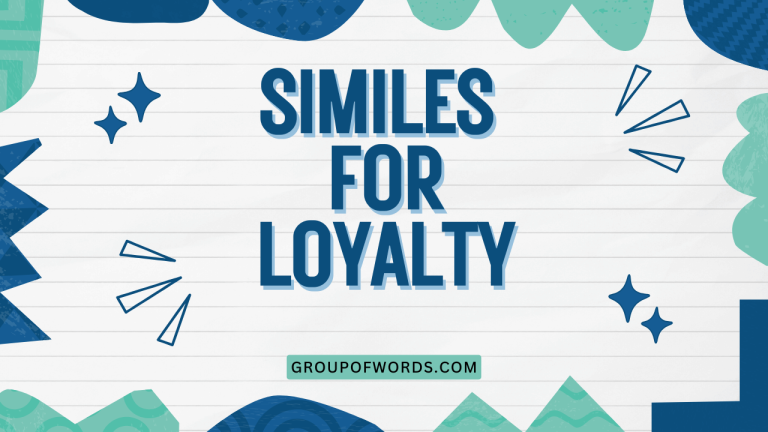Metaphors About Myself: Understanding Self-Figuration
Metaphors are powerful tools in language, allowing us to understand abstract concepts by relating them to more concrete ones. When we use metaphors to describe ourselves, we engage in a process of self-figuration, shaping our self-perception and how we present ourselves to the world.
Understanding these metaphorical expressions is crucial for gaining deeper insights into self-awareness, communication, and the nuances of the English language. This article will explore the various types of metaphors we use to describe ourselves, their structural elements, usage rules, common mistakes, and provide practical exercises to enhance your understanding and application.
This comprehensive guide is designed for English language learners of all levels, from beginners to advanced speakers. Whether you’re writing a personal essay, crafting a resume, or simply trying to better understand how you perceive yourself, mastering the art of using and interpreting metaphors about yourself will significantly improve your communication skills and self-expression.
Table of Contents
- Definition of Metaphors About Myself
- Structural Breakdown of Self-Metaphors
- Types and Categories of Self-Metaphors
- Examples of Metaphors About Myself
- Usage Rules for Self-Metaphors
- Common Mistakes with Self-Metaphors
- Practice Exercises
- Advanced Topics in Self-Figuration
- Frequently Asked Questions
- Conclusion
Definition of Metaphors About Myself
A metaphor is a figure of speech that directly compares two unrelated things without using “like” or “as.” It asserts that one thing *is* another, creating a figurative rather than literal meaning. When the subject of the metaphor is oneself, it becomes a self-metaphor. These metaphors offer a creative and often insightful way to express personal qualities, experiences, and states of being.
Self-metaphors are not merely decorative language; they play a significant role in how we conceptualize and communicate our identities. They allow us to convey complex emotions, beliefs, and characteristics in a concise and impactful manner.
By understanding the underlying meaning of these metaphors, we can gain a deeper understanding of ourselves and others.
The function of self-metaphors extends beyond mere description. They can be used to:
- Express complex emotions and feelings
- Highlight specific personality traits
- Convey personal experiences and challenges
- Create a vivid and memorable impression
- Offer a unique perspective on oneself
Structural Breakdown of Self-Metaphors
A typical metaphor consists of two main elements: the tenor and the vehicle. The tenor is the subject being described (in this case, oneself), and the vehicle is the object or concept used to describe the tenor.
For example, in the metaphor “I am a rock,” “I” is the tenor, and “rock” is the vehicle. The metaphor suggests that the speaker possesses qualities associated with rocks, such as strength, stability, and resilience.
The effectiveness of a self-metaphor depends on the connection between the tenor and the vehicle. The chosen vehicle should resonate with the intended meaning and create a clear and compelling image in the listener’s or reader’s mind.
The relationship between the tenor and vehicle is not always explicitly stated but is implied through shared characteristics or associations.
Here’s a breakdown of the structural elements:
- Tenor: The subject of the metaphor (oneself).
- Vehicle: The object or concept used to describe the subject.
- Ground: The shared characteristics or associations between the tenor and the vehicle.
Understanding these elements allows for a more precise and intentional use of self-metaphors, ensuring that the intended message is effectively conveyed.
Types and Categories of Self-Metaphors
Self-metaphors can be categorized based on the type of vehicle used and the aspect of oneself that is being emphasized. Here are some common categories:
Nature Metaphors
These metaphors use elements of nature to describe oneself, often highlighting qualities such as strength, growth, or adaptability.
Object Metaphors
These metaphors use inanimate objects to represent oneself, often emphasizing qualities such as resilience, usefulness, or complexity.
Animal Metaphors
These metaphors use animals to describe oneself, often highlighting specific personality traits or behaviors.
Abstract Metaphors
These metaphors use abstract concepts to represent oneself, often conveying complex emotions or states of being.
Weather Metaphors
These metaphors use weather conditions to describe one’s mood, emotional state, or overall disposition.
Each category offers a unique perspective on self-expression, allowing for a diverse range of metaphorical representations. The choice of category depends on the specific qualities or experiences one wishes to convey.
Examples of Metaphors About Myself
The following tables provide extensive examples of self-metaphors, categorized by type. Each example is designed to illustrate the different ways in which metaphors can be used to describe oneself.
Nature Metaphors Examples
This table showcases metaphors that use elements of nature to convey personal characteristics. Notice how each metaphor leverages the inherent qualities of the natural element to describe the individual.
| Metaphor | Interpretation |
|---|---|
| I am a towering oak, weathering every storm. | I am strong, resilient, and able to withstand challenges. |
| I am a gentle stream, flowing smoothly through life. | I am peaceful, adaptable, and easygoing. |
| I am a blooming flower, growing and evolving. | I am beautiful, developing, and full of potential. |
| I am a dormant volcano, with untapped potential. | I have hidden talents and abilities waiting to be unleashed. |
| I am a vast ocean, full of mystery and depth. | I am complex, profound, and have many hidden aspects. |
| I am a sturdy mountain, unyielding and steadfast. | I am reliable, firm, and unwavering. |
| I am a winding river, constantly changing course. | I am adaptable, flexible, and always evolving. |
| I am a lush forest, teeming with life and energy. | I am vibrant, energetic, and full of potential. |
| I am a barren desert, waiting for a spark of inspiration. | I feel empty and uninspired, but hopeful for change. |
| I am a bright star, shining brightly in the night sky. | I am confident, radiant, and inspiring. |
| I am a quiet meadow, peaceful and serene. | I am calm, tranquil, and find joy in simplicity. |
| I am a dense jungle, full of challenges and adventures. | My life is complicated and exciting, with many obstacles to overcome. |
| I am a fragile leaf, easily swayed by the wind. | I am sensitive and easily influenced by others. |
| I am a deep cave, hiding secrets and mysteries. | I am introspective and keep my thoughts and feelings to myself. |
| I am a fertile field, ready to nurture new ideas. | I am creative, open-minded, and receptive to new possibilities. |
| I am a rolling hill, offering gentle slopes and scenic views. | My life has ups and downs, but overall it’s pleasant and rewarding. |
| I am a rocky cliff, standing tall against the waves. | I am resilient and determined, even in the face of adversity. |
| I am a budding rose, slowly revealing my beauty. | I am developing my potential and becoming more confident. |
| I am a twisted vine, clinging to what I love. | I am loyal and protective of the people and things I care about. |
| I am a sun-drenched beach, warm and inviting. | I am approachable, friendly, and create a welcoming environment. |
| I am a raging fire, passionate and intense. | I am driven, energetic, and deeply committed to my goals. |
| I am a gentle breeze, bringing comfort and relief. | I am supportive, helpful, and offer a sense of calm. |
Object Metaphors Examples
This table provides examples of metaphors that use inanimate objects to express personal qualities. Consider how the characteristics of each object are used to represent the individual’s traits.
| Metaphor | Interpretation |
|---|---|
| I am a well-oiled machine, functioning efficiently. | I am organized, productive, and perform tasks smoothly. |
| I am a sturdy bridge, connecting people and ideas. | I am a facilitator, bringing people together and fostering understanding. |
| I am a finely crafted clock, precise and reliable. | I am punctual, dependable, and detail-oriented. |
| I am a sharp knife, cutting through obstacles. | I am decisive, focused, and effective at overcoming challenges. |
| I am a blank canvas, waiting to be filled with art. | I am open to new experiences and eager to create something meaningful. |
| I am a tangled knot, complex and difficult to understand. | I am complicated, mysterious, and hard to decipher. |
| I am a solid brick, forming part of a larger structure. | I am dependable, reliable, and contribute to a greater purpose. |
| I am a flexible rubber band, able to stretch and adapt. | I am resilient, adaptable, and able to handle stress. |
| I am a multifaceted diamond, shining from every angle. | I have many talents and qualities, each contributing to my overall brilliance. |
| I am a worn-out shoe, comfortable but in need of repair. | I am experienced, familiar, but in need of rejuvenation. |
| I am a rusty key, holding the potential to unlock secrets. | I am knowledgeable, but my skills need to be refreshed. |
| I am a sturdy shield, protecting those I care about. | I am protective, supportive, and always there for others. |
| I am a colorful patchwork quilt, made of different experiences. | My life is diverse and rich, with a variety of experiences that have shaped me. |
| I am a delicate teacup, easily broken but beautiful. | I am sensitive, fragile, but possess inner beauty. |
| I am a powerful magnet, attracting opportunities and connections. | I am charismatic, influential, and draw people and opportunities to me. |
| I am a complex puzzle, challenging to solve but rewarding. | I am intriguing, thought-provoking, and offer a sense of accomplishment when understood. |
| I am a sturdy ladder, helping others climb to success. | I am supportive, helpful, and empower others to achieve their goals. |
| I am a bright lightbulb, illuminating the path for others. | I am insightful, inspiring, and provide clarity and guidance. |
| I am a sharp pencil, ready to write my own story. | I am creative, expressive, and determined to shape my own destiny. |
| I am a broken mirror, reflecting fragmented images of myself. | I struggle with self-perception and have a distorted view of myself. |
| I am a complex machine, with many moving parts. | I am complicated and require careful attention to function properly. |
| I am a finely tuned instrument, capable of creating beautiful music. | I am talented, skilled, and able to produce exceptional results. |
Animal Metaphors Examples
This table presents metaphors that use animals to represent personal characteristics. Pay attention to how the traits commonly associated with each animal are used to describe the individual.
| Metaphor | Interpretation |
|---|---|
| I am a graceful swan, gliding effortlessly through life. | I am elegant, poised, and navigate challenges with ease. |
| I am a loyal dog, always there for my friends. | I am faithful, supportive, and dedicated to my relationships. |
| I am a sly fox, quick-witted and resourceful. | I am clever, cunning, and able to find creative solutions. |
| I am a roaring lion, confident and assertive. | I am strong, courageous, and not afraid to take charge. |
| I am a busy bee, always working and productive. | I am diligent, industrious, and constantly striving to achieve my goals. |
| I am a wise owl, observant and insightful. | I am perceptive, knowledgeable, and able to offer valuable advice. |
| I am a playful dolphin, energetic and sociable. | I am cheerful, friendly, and enjoy being around others. |
| I am a cautious turtle, taking my time and being careful. | I am deliberate, thoughtful, and avoid rushing into decisions. |
| I am a soaring eagle, ambitious and determined. | I am driven, focused, and always aiming for the highest goals. |
| I am a gentle lamb, innocent and kind-hearted. | I am pure, compassionate, and always strive to be good. |
| I am a stubborn mule, resistant to change. | I am inflexible, unwilling to compromise, and set in my ways. |
| I am a graceful gazelle, quick and agile. | I am nimble, athletic, and able to adapt to changing situations. |
| I am a powerful bear, protective and fierce. | I am strong, defensive, and will defend those I care about. |
| I am a quiet mouse, unassuming but observant. | I am shy, reserved, but pay close attention to my surroundings. |
| I am a colorful parrot, mimicking the words of others. | I am imitative, expressive, and enjoy repeating what I hear. |
| I am a solitary wolf, independent and self-reliant. | I am self-sufficient, prefer to work alone, and trust my own instincts. |
| I am a busy ant, working tirelessly for the common good. | I am cooperative, hardworking, and dedicated to the success of the group. |
| I am a cunning snake, clever and manipulative. | I am strategic, resourceful, and able to get what I want. |
| I am a slow snail, taking life at my own pace. | I am unhurried, relaxed, and enjoy savoring every moment. |
| I am a fragile butterfly, delicate and beautiful. | I am sensitive, elegant, and possess inner beauty. |
| I am a persistent beaver, building and creating. | I am industrious, innovative, and dedicated to constructing something lasting. |
| I am a playful kitten, curious and mischievous. | I am curious, energetic, and enjoy exploring new things. |
Usage Rules for Self-Metaphors
Using self-metaphors effectively requires careful consideration of several rules:
- Clarity: The metaphor should be clear and easy to understand. Avoid obscure or overly complex comparisons.
- Relevance: The vehicle should be relevant to the desired meaning and accurately reflect the intended qualities.
- Consistency: Maintain consistency in the metaphor throughout the communication. Avoid mixing metaphors or shifting the comparison abruptly.
- Context: Consider the context and audience when using self-metaphors. Choose metaphors that are appropriate for the situation and will resonate with the intended audience.
- Originality: Strive for originality in your metaphors. Avoid clichés or overused comparisons.
Adhering to these rules will ensure that your self-metaphors are effective, impactful, and contribute to clear and meaningful communication.
Common Mistakes with Self-Metaphors
Several common mistakes can undermine the effectiveness of self-metaphors:
- Mixed Metaphors: Combining two or more unrelated metaphors, creating a confusing and illogical image.
- Clichés: Using overused and unoriginal metaphors that lack impact and creativity.
- Inappropriate Vehicles: Choosing vehicles that do not accurately reflect the intended qualities or are inappropriate for the context.
- Lack of Clarity: Using metaphors that are too abstract or obscure, making it difficult for the audience to understand the intended meaning.
Here are some examples of common mistakes and their corrections:
| Incorrect | Correct | Explanation |
|---|---|---|
| I am a rolling stone gathering moss. | I am a rolling stone, never settling down. | The original metaphor is mixed; rolling stones don’t gather moss. |
| I am a diamond in the rough. | I am a hidden gem, waiting to be discovered. | “Diamond in the rough” is a cliché. |
| I am a nuclear bomb of happiness. | I am a burst of sunshine, bringing joy to others. | “Nuclear bomb” is an inappropriate vehicle for happiness. |
| I am a quantum entanglement of emotions. | I am a complex tapestry of emotions. | “Quantum entanglement” is too abstract and lacks clarity. |
Avoiding these common mistakes will enhance the clarity, impact, and effectiveness of your self-metaphors.
Practice Exercises
Test your understanding of self-metaphors with the following exercises:
Exercise 1: Identifying Metaphors
Identify the self-metaphor in each sentence and explain its meaning.
| Question | Answer |
|---|---|
| 1. I am a compass, always pointing towards my true north. | I am a compass: I am guided by my values and goals. |
| 2. She is a fortress, strong and impenetrable. | She is a fortress: She is resilient and protects herself from emotional harm. |
| 3. He is a raging storm, full of anger and frustration. | He is a raging storm: He is experiencing intense negative emotions. |
| 4. We are a symphony, playing in perfect harmony. | We are a symphony: We work together seamlessly and effectively. |
| 5. You are a blank page, ready to be written on. | You are a blank page: You have limitless potential and opportunities. |
| 6. They are a bridge, connecting different cultures. | They are a bridge: They facilitate understanding and communication between cultures. |
| 7. I am a seed, planted in fertile ground. | I am a seed: I have the potential to grow and thrive in a supportive environment. |
| 8. She is a fire, burning with passion and determination. | She is a fire: She is driven and intensely committed to her goals. |
| 9. He is a mirror, reflecting the emotions of others. | He is a mirror: He is empathetic and easily influenced by the feelings of those around him. |
| 10. We are a team, working together like gears in a machine. | We are a team: We are coordinated and each member contributes to the overall success. |
Exercise 2: Creating Self-Metaphors
Create a self-metaphor for each of the following qualities:
| Quality | Self-Metaphor |
|---|---|
| Resilience | I am a rubber band, always bouncing back from setbacks. |
| Creativity | I am a kaleidoscope, constantly generating new ideas. |
| Patience | I am a slow-burning candle, providing steady light. |
| Strength | I am an anchor, holding firm in turbulent waters. |
| Adaptability | I am a chameleon, blending in with my surroundings. |
| Kindness | I am a warm blanket, offering comfort and solace. |
| Intelligence | I am a vast library, filled with knowledge and wisdom. |
| Courage | I am a brave knight, facing challenges head-on. |
| Loyalty | I am a faithful companion, always standing by your side. |
| Optimism | I am a sunrise, bringing hope and new beginnings. |
Exercise 3: Correcting Mistakes
Identify and correct the mistakes in the following self-metaphors:
| Incorrect | Correct | Explanation |
|---|---|---|
| I am a roaring ocean of happiness. | I am a wave of happiness, washing over everything. | “Roaring ocean” is too intense for happiness. |
| I am a blank canvas in the rough. | I am a blank canvas, full of potential. | Mixed metaphor and cliché. |
| I am a flexible rock, bending but not breaking. | I am a flexible reed, bending but not breaking. | Rocks are not flexible; reeds are. |
| I am a gentle lion, roaring with kindness. | I am a gentle lamb, full of kindness. | Contradictory qualities; lions are not gentle. |
| I am a quantum computer of emotions. | I am a complex network of emotions. | “Quantum computer” is too technical and lacks clarity. |
| I am a brick wall of joy. | I am a fountain of joy, overflowing with happiness. | “Brick wall” is not associated with joy. |
| I am a rusty diamond in the sky. | I am a shining star in the sky. | “Rusty diamond” is contradictory and cliché. |
| I am a tornado of serenity. | I am a gentle breeze of serenity, bringing peace. | “Tornado” is the opposite of serenity. |
| I am a tangled web of sunshine. | I am a ray of sunshine, bringing warmth and light. | “Tangled web” is not associated with sunshine. |
| I am a broken clock, always on time. | I am a reliable clock, always on time. | “Broken clock” is contradictory. |
Advanced Topics in Self-Figuration
For advanced learners, exploring the nuances of self-figuration can lead to a deeper understanding of language and identity. Consider these advanced topics:
- Extended Metaphors: Developing a single metaphor over an extended passage, creating a rich and complex representation of oneself.
- Implicit Metaphors: Using subtle and indirect metaphors that require the audience to infer the comparison.
- Cognitive Metaphor Theory: Exploring the philosophical implications of metaphors and their role in shaping our thoughts and perceptions.
- Cross-Cultural Metaphors: Examining how self-metaphors vary across different cultures and languages.
- The Use of Self-Metaphors in Literature and Poetry: Analyzing how authors and poets use self-metaphors to convey complex characters and themes.
These advanced topics offer opportunities for further exploration and a more nuanced understanding of the power and complexity of self-metaphors.
Frequently Asked Questions
Here are some frequently asked questions about self-metaphors:
- What is the difference between a metaphor and a simile?
A metaphor directly states that one thing *is* another, while a simile uses “like” or “as” to make a comparison. For example, “I am a rock” is a metaphor, while “I am as strong as a rock” is a simile.
- Why are self-metaphors important?
Self-metaphors allow us to express complex emotions, beliefs, and characteristics in a concise and impactful manner. They can also provide deeper insights into self-awareness and communication.
- How can I create effective self-metaphors?
To create effective self-metaphors, choose vehicles that are relevant, clear, and original. Consider the context and audience, and maintain consistency in your comparisons.
- What are some common pitfalls to avoid when using self-metaphors?
Avoid mixed metaphors, clichés, inappropriate vehicles, and a lack of clarity. Ensure that your metaphors are logical, original, and easy to understand.
- Can self-metaphors be used in professional settings?
Yes, self-metaphors can be used in professional settings, but use them judiciously and ensure they are appropriate for the context. They can be particularly effective in personal statements, cover letters, and presentations.
- How do I interpret other people’s self-metaphors?
When interpreting other people’s self-metaphors, consider the connotations of the vehicle they’ve chosen. What qualities or characteristics are they trying to convey? Also, take into account the context and their personal background.
- Are there any cultural differences in the interpretation of metaphors?
Yes, cultural background can significantly influence the interpretation of metaphors. Certain symbols or concepts may have different meanings or associations in different cultures. Be mindful of these differences when communicating with people from diverse backgrounds.
- How can I improve my ability to understand and use metaphors?
Read widely, pay attention to how metaphors are used in literature and everyday speech, and practice creating your own metaphors. The more you engage with metaphorical language, the better you’ll become at understanding and using it effectively.
Conclusion
Mastering the art of using and understanding metaphors about oneself is a valuable skill for anyone seeking to improve their communication and self-expression. By understanding the structural elements, types, and usage rules of self-metaphors, you can create powerful and impactful representations of yourself.
Avoid common mistakes, practice regularly, and explore advanced topics to deepen your understanding and enhance your ability to use metaphors effectively.
Remember that self-metaphors are not just linguistic tools; they are reflections of our inner selves. By carefully choosing and crafting these metaphors, we can gain a deeper understanding of who we are and how we present ourselves to the world.
Embrace the power of metaphorical language and unlock new levels of self-awareness and communication.
